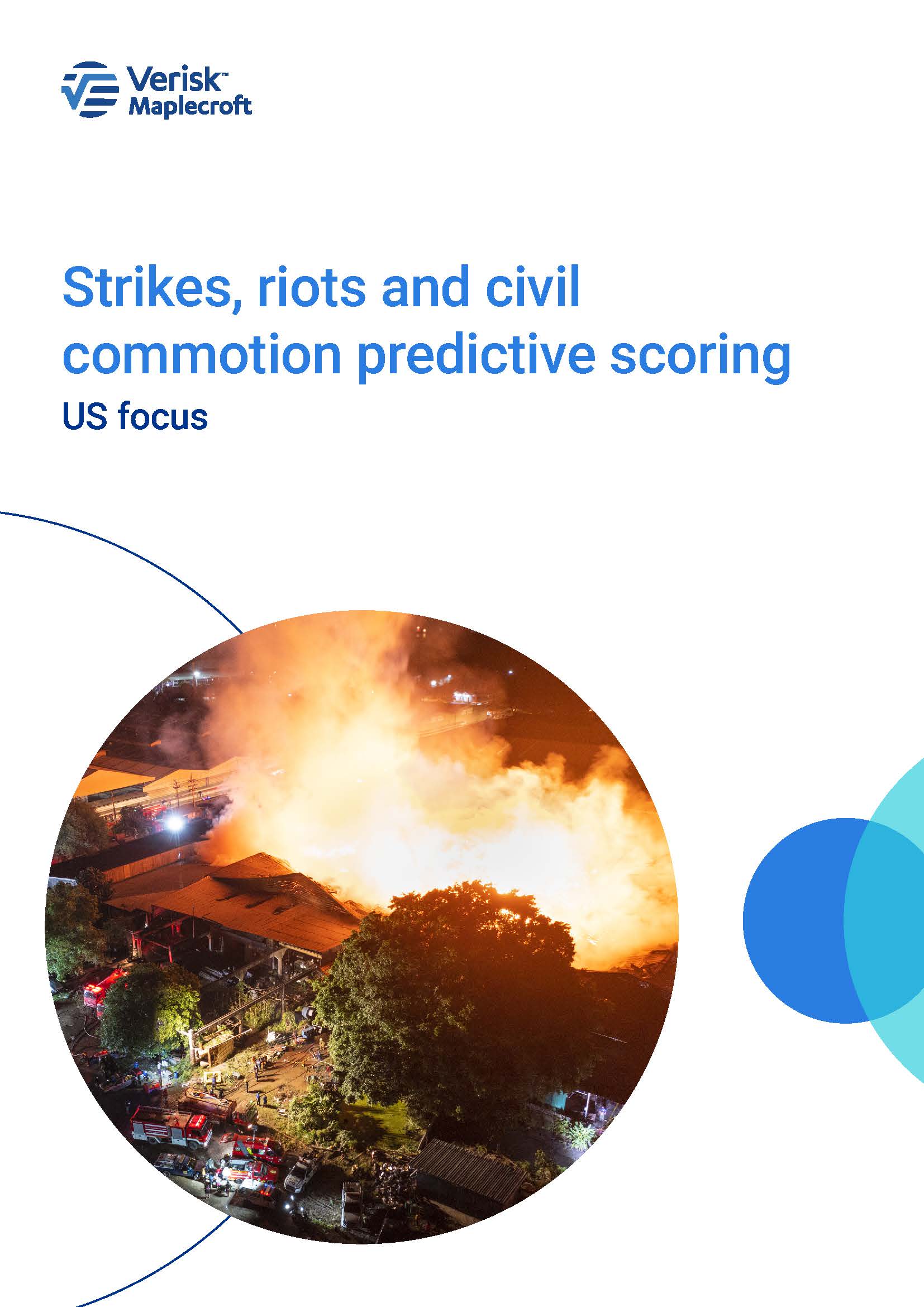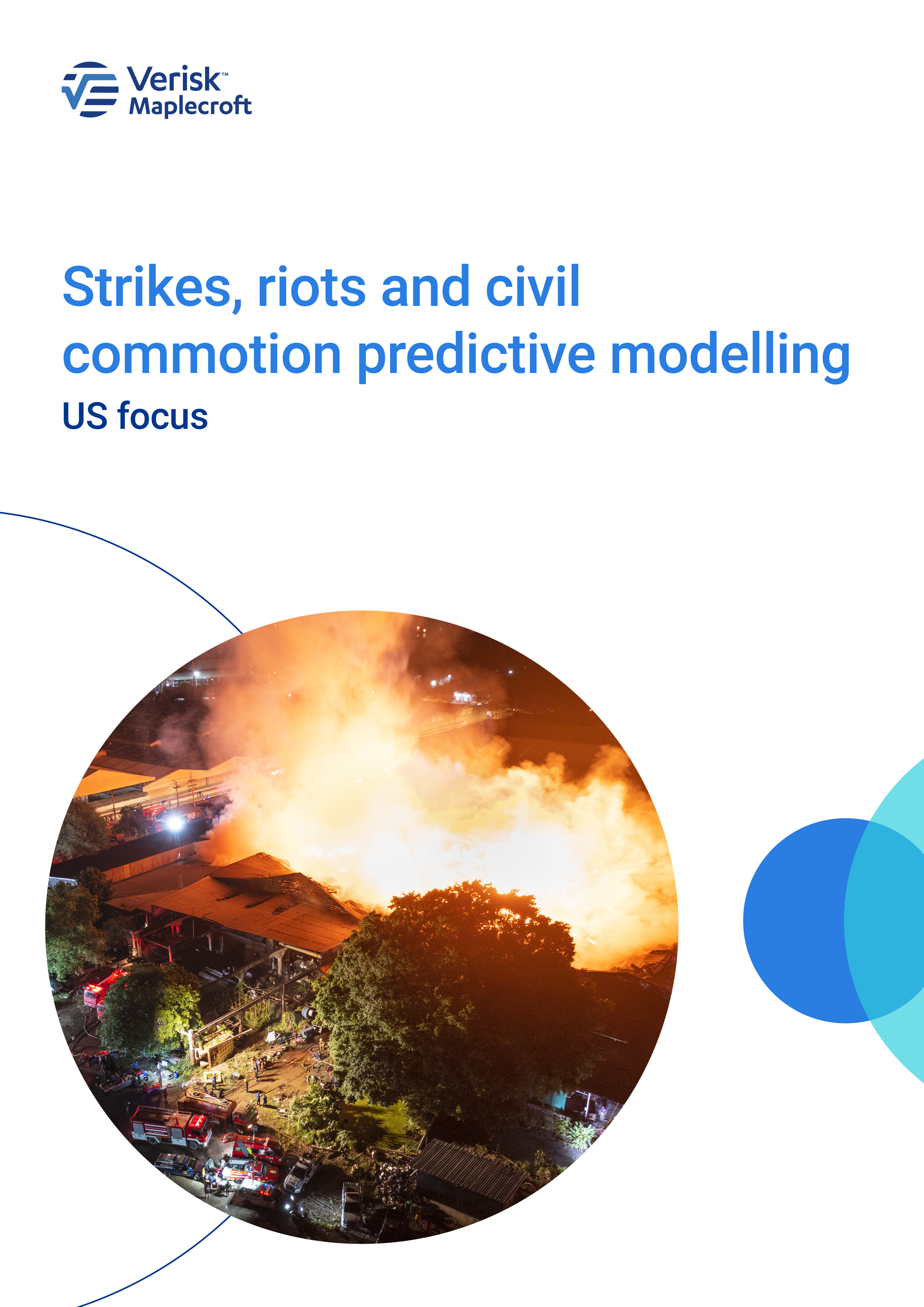The US presidential election has already been one of the most volatile in modern history, with two assassination attempts against Republican nominee Donald Trump, and the withdrawal of President Joe Biden. But as we draw closer to 5 November, the potential for political violence in the form of large-scale protests is also overshadowing the race to the White House.
Data from our Global Strikes Riots and Civil Commotion (SRCC) Predictive Scores, which forecasts the likelihood of damaging civil unrest taking place in 198 countries over the next 12 months, shows that the election is taking place at a time of heightened risk. Current conditions are on a par with those just prior to the George Floyd riots, which cost approximately USD3billion in insured losses in 2020. As a result, the US is now ranked as the 5th highest risk country in the world for the issue.
Compounding the risk, public opinion polls suggest that political polarisation has continued to rise in the country and is now higher than during the last election. According to Pew Research, around three-quarters of supporters of Democratic contender Kamala Harris and four-fifths of Trump supporters profoundly disagree with the other side’s core values. A highly charged political environment in the run-up to, during, and after the election is a significant concern as it creates a higher baseline potential for a major unrest event.
Elections are not necessarily good predictors of civil unrest
Although counterintuitive, most elections globally do not spark violent civil unrest. This year’s global election super cycle has been a good test case for the correlation between major elections and violent civil unrest. As shown in the map below, out of the 38 major elections that took place during the first eight months of the year, only four experienced widespread election-related unrest.
Figure 1: Only four elections during 2024 ‘super cycle’ witnessed major unrest
But the current volatile political landscape in the US provides an environment that could spark violent protests and riots in the run-up to and after the election. In the event of violence at polling stations or a contested election outcome, the potential for local events to turn nationwide is significant.
Data from our Global SRCC Predictive Scores shows that a high number of areas face elevated risks. In total, 755 counties are placed in the very high or high-risk categories, based on the severity and frequency of protests – as well as the concentration of economic value and people – in these areas.
The 10 highest risk counties are:
- New York, NY
- Kings, NY
- District of Columbia, DC
- Bronx, NY
- Queens, NY
- San Francisco, CA
- Philadelphia, PA
- Suffolk, MA
- Cook, IL
- Los Angeles, CA
The riots at the Capitol in January 2021 underscore the underlying risk of election-related tensions sparking civil unrest. Those riots included substantial participation by agitator groups whose presence at demonstrations in the next months could raise the risk of violence. In parallel, threats against public officials continue to increase, mirroring a global trend of rising polarisation and growing mistrust in public authorities. Not only is the underlying SRCC risk higher than in January 2021, the potential for flashpoints to ignite civil unrest is also greater.
What is driving SRCC risk in the US?
The underlying drivers of SRCC risk in the US are complex and varied. Most importantly the country has a historic propensity for large-scale unrest events. But climate and development factors, income inequality and a higher risk of extrajudicial or unlawful killings, which were particularly relevant in the context of the 2020 riots, also play an important role.
Conversely, the fact that the US economy is performing better than many of its peers is somewhat tempering the overall SRCC risk. Inflation has come down more quickly than in Europe and the economy continues to grow at a faster rate than others in the G7 or the Eurozone as a whole. Nevertheless, public sentiment remains as negative towards the economy as it was at the start of the year, suggesting that socioeconomic factors could still spark unrest.
Post-election period may present greater SRCC risks
Despite a growing normalisation of political violence in the US, specific election-related unrest remains relatively rare, as shown by the largely peaceful outcome of the 2022 midterm elections. However, the negative trajectory of the overall SRCC risk environment indicates that election-related events, such as rallies and issue-specific protests, do carry an elevated potential for unrest
Crucially, the risk of election-related unrest will rise substantially if the outcome of the election is tightly contested – particularly should Trump lose to Harris. In such a scenario, SRCC risks would be likely to rise around ‘political’ targets – including institutional milestones in the presidential confirmation process.

